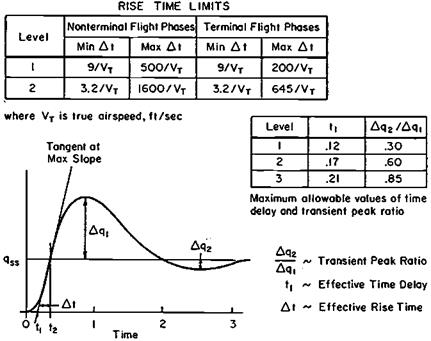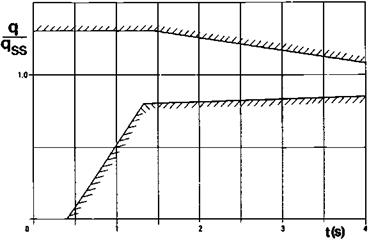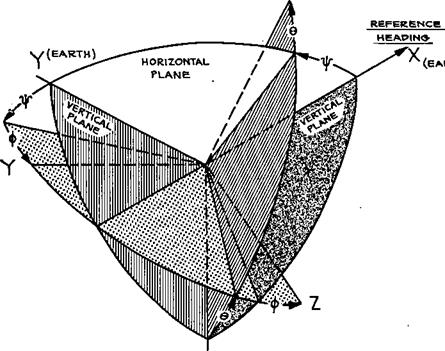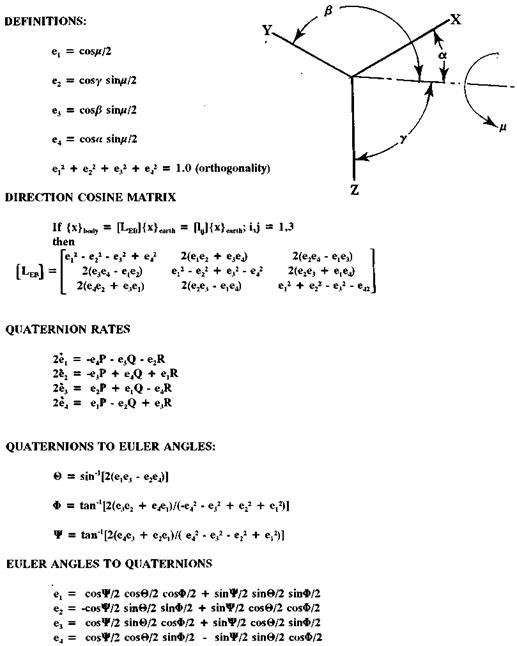After raising student enthusiasm by a particularly inspiring airplane stability and control lecture, Professor Otto Koppen would restore perspective by saying, “Remember, airplanes are not built to demonstrate stability and control, but to carry things from one place to another.” Perhaps Koppen went too far, because history has shown over and over again that neglect of stability and control fundamentals has brought otherwise excellent aircraft projects down, sometimes literally. Every aspiring airplane builder sees the need intuitively for sturdy structures and adequate propulsive power. But badly located centers of gravity and inadequate rudder area for spin recovery, for example, are subtleties that can be missed easily, and have been missed repeatedly.
Before the gas turbine age, much of the art of stability and control design was devoted to making airplanes that flew themselves for minutes at a time in calm air, and responded gracefully to the hands and feet of the pilot when changes in course or altitude were required. These virtues were called flying qualities. They were codified for the first time by the National Advisory Committee for Aeronautics, the NACA, in 1943. Military procurement specifications based on NACA’s work followed two years later.
When gas turbine power arrived, considerations of fuel economy drove airplanes into the stratosphere and increased power made transonic flight possible. Satisfactory flying qualities no longer could be achieved by a combination of airplane geometry and restrictions on center-of-gravity location. Artificial stability augmenters such as pitch and yaw dampers were required, together with Mach trim compensators, all-moving tailplanes, and irreversible surface position actuators. At roughly the same time, the Boeing B-47 and the Northrop B-49 and their successful stability augmenters marked the beginning of a new age.
Since then much of the art and science that connected airplane geometry to good low – altitude flying qualities have begun to be lost to a new generation of airplane designers and builders. The time has come to record the lore of earlier airplane designers for the benefit of the kit-built airplane movement, to say nothing of the survivors of the general-aviation industry. Accordingly, this book is an informal, popular survey of the art and science of airplane stability and control. As history, the growth of understanding of the subject is traced from the pre-Wright brothers’ days up to the present. But there is also the intention of preserving for future designers the hard-won experience of what works and what doesn’t. The purpose is not only to honor the scientists and engineers who invented airplane stability and control, but also to help a few future airplane designers along the path to success.
If this work has any unifying theme, it is the lag of stability and control practice behind currently available theory. Repeatedly, airplanes have been built with undesirable or even fatal stability and control characteristics out of simple ignorance of the possibility of using better designs. In only a few periods, such as the time of the first flights near the speed of sound, theoreticians, researchers, and airplane designers were all in the same boat, all learning together.
The second edition of this book brings the subject up to date by including recent developments. We have also used the opportunity to react to the numerous reviews of the first edition and to the comments of readers. One theme found in many reviews was that the first edition had neglected important airplane stability and control work that took place outside of the United States. That was not intentional, but the second edition has given the authors a new opportunity to correct the problem. In that effort, we were greatly aided by the following correspondents and reviewers in Canada, Europe, and Asia: Michael V Cook, Dr. Bernard Etkin, Dr. Peter G. Hamel, Dr. John C. Gibson, Bill Gunston, Dr. Norohito Goto, Dr. Gareth D. Padfield, Miss A. Jean Ross, the late Dr. H. H. B. M. Thomas, and Dr. Jean-Claude L. Wanner.
The interesting history of airplane stability and control has not lacked for attention in the past. A number of distinguished authors have presented short airplane stability and control histories, as distinct from histories of general aeronautics. We acknowledge particularly the following accounts:
Progress in Dynamic Stability and Control Research, by William F. Milliken, Jr., in the September 1947 Journal of the Aeronautical Sciences.
Development of Airplane Stability and Control Technology, by Courtland D. Perkins, in the July-August 1970 Journal of Aircraft.
Eighty Years of Flight Control: Triumphs and Pitfalls of the Systems Approach, by Duane T McRuer and F. Dunstan Graham, in the July-August 1981 Journal of Guidance and Control.
Twenty-Five Years of Handling Qualities Research, by Irving L. Ashkenas, in the May 1984 Journal of Aircraft.
Flying Qualities from Early Airplanes to the Space Shuttle, by William H. Phillips, in the July-August 1989 Journal of Guidance, Control, and Dynamics.
Establishment of Design Requirements: Flying Qualities Specifications for American Aircraft, 1918-1943, by Walter C. Vincenti, Chapter 3 of What Engineers Know and How They Know It, Johns Hopkins University Press, 1990.
Evolution of Airplane Stability and Control: A Designer’s Viewpoint, by Jan Roskam, in the May-June 1991 Journal of Guidance.
Recollections of Langley in the Forties, by W. Hewitt Phillips, in the Summer 1992 Journal of the American Aviation Historical Society.
Many active and retired contributors to the stability and control field were interviewed for this book; some provided valuable references and even more valuable advice to the authors. The authors wish to acknowledge particularly the generous help of a number of them. Perhaps foremost in this group was the late Charles B. Westbrook, a well-known stability and control figure. Westbrook helped with his broad knowledge of U. S. Air Force – sponsored research and came up with several obscure but useful documents. W. Hewitt Phillips, an important figure in the stability and control field, reviewed in detail several book chapters. His comments are quoted verbatim in a number of places. Phillips is now a Distinguished Research Associate at the NASA Langley Research Center.
We were fortunate to have detailed reviewsfrom two additional experts, William H. Cook, formerly of the Boeing Company, and Duane T. McRuer, chairman of Systems Technology, Inc. Their insights into important issues are used and also quoted verbatim in several places in the book. Drs. John C. Gibson, formerly of English Electric/British Aerospace, and Peter G. Hamel, director of the DVL Institute of Flight Research, Braunschweig, were helpful with historical and recent European developments, as were several other European and Canadian engineers.
Jean Anderson, head librarian of the Guggenheim Aeronautical Laboratory at the California Institute of Technology (GALCIT) guided the authorsthrough GALCIT’simpres – sive aeronautical collections. All National Advisory Committee for Aeronautics (NACA) documents are there, in microfiche. The GALCIT collections are now located at the Institute’s Fairchild Library, where the Technical Reference Librarian, Louisa C. Toot, has been most helpful. We were fortunate also to have free access to the extensive stability and control collections at Systems Technology, Inc., of Hawthorne, California. We thank STI’s chairman and president, Duane T. McRuer and R. Wade Allen, for this and for very helpful advice.
The engineering libraries of the University of California, Los Angeles, and of the University of Southern California were useful in this project. We acknowledge also the help of George Kirkman, the volunteer curator of the library of the Museum of Flying, in Santa Monica, California, and the NASA Archivist Lee D. Saegesser.
In addition to the European and Asian engineers noted previously, the following people generously answered our questions and in many cases loaned us documents that added materially to this work: Paul H. Anderson, James G. Batterson, James S. Bowman, Jr., Robert W. Bratt, Daniel P. Byrnes, C. Richard Cantrell, William H. Cook, Dr. Eugene E. Covert, Dr. Fred E. C. Culick, Sean G. Day, Orville R. Dunn, Karl S. Forsstrom, Richard G. Fuller, Ervin R. Heald, Robert K. Heffley, Dr. Harry J. Heimer, R. Richard Heppe, Bruce E. Jackson, Henry R. Jex, Juri Kalviste, Charles H. King, Jr., William Koven, David A. Lednicer, Dr. Paul B. MacCready, Robert H. Maskrey, Dr. Charles McCutchen, Duane T McRuer, Allen Y. Murakoshi, Albert F. Myers, Dr. Gawad Nagati, Stephen Osder, Robert O. Rahn, Dr. William P Rodden, Dr. Jan Roskam, Edward S. Rutowski, George S. Schairer, Roger D. Schaufele, Arno E. Schelhorn, Lawrence J. Schilling, Dr. Irving C. Statler, and Dr. Terrence A. Weisshaar.
Only a few of these reviewers saw the entire book in draft form, so the authors are responsible for any uncorrected errors and omissions.
This book is arranged only roughly in chronological order. Most of the chapters are thematic, dealing with a single subject over its entire history. References are grouped by chapters at the end of the book. These have been expanded to form an abbreviated or core airplane stability and control bibliography. The rapid progress in computerized bibliographies makes anachronistic a really comprehensive airplane stability and control bibliography.
Malcolm J. Abzug E. Eugene Larrabee
Airplane Stability and Control, Second Edition

















